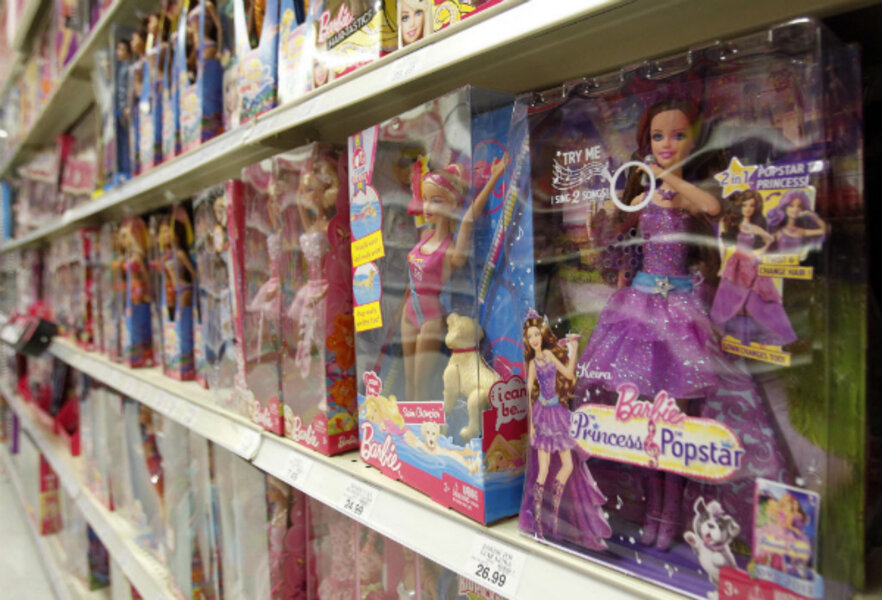Barbie sales are down, but here's betting she's not out
Loading...
After more than 50 years as a pint-sized superstar, Barbie has hit a wall.
The perennially popular series of dolls, which are world-famous for (or notorious for, depending upon your perspective) their depiction of a glamorous, jet-setting, image-conscious lifestyle, has hit its fourth consecutive quarter of declining sales. Barbie's challenges have affected the overall financial condition of the toy company Mattel.
This isn't the first time the line of toys has struggled. "The slump is not at all unprecedented," Sean McGowan said in an e-mail, a senior analyst at the investment banking firm Needham & Company. "Barbie was in a decade-long swoon from 2000 to 2010 when it was competing with Bratz," he says, referring to the hipper, edgier dolls that were a sales and cultural phenomenon in their time. "It is recoverable, but it's tough. If [Mattel] management's explanation is right, second half sales should be better because they consciously shifted shipments to later in the year."
Even as Barbie has struggled, Mattel's American Girl collection has thrived, defying "the times are changing" analysis of why Barbie sales keep slipping. Mr. McGowan discounts the impact of the Internet and cell phones on the way consumers view the doll, saying: "Barbie's core [consumer] age is now about 5 to 6 years old, a bit young for cell phones."
The financial condition of Barbie is related to – but not the same as – its cultural condition. Tanya Lee Stone is the author of "The Good, the Bad, and the Barbie," a history of the Barbie phenomenon written for younger readers, and she says that it's too early to count the dolls out.
"I don't think Barbie has lost relevance, especially the Barbie dolls that stay closest to the original mission of Ruth Handler, her inventor," Ms. Stone said in an e-mail. "Barbie was always intended to be a vehicle for a girl's imagination, and I don't think that concept can ever go out of style."
From Stone's perspective the intense (and longstanding) hand-wringing about the cultural significance of Barbie misses the point, which is the way children actually relate to the doll. "When I was collecting anecdotes for my book, the disparity between kid's opinions and adult's opinions about Barbie was dramatic," she says. "Basically, it was the grownups that were arguing about the detrimental effects of Barbie on girls while kids were not viewing Barbie as anything but a doll on which to impose their own ideas."
Barbie-branded merchandise, which has total annual sales somewhere in the neighborhood of $3 billion, isn't going anywhere soon – tradition, nostalgia, and a still-gigantic share of the doll market are powerful shields against the fluctuation of trends. For good or ill, the saga of Barbie continues – at least for now.








